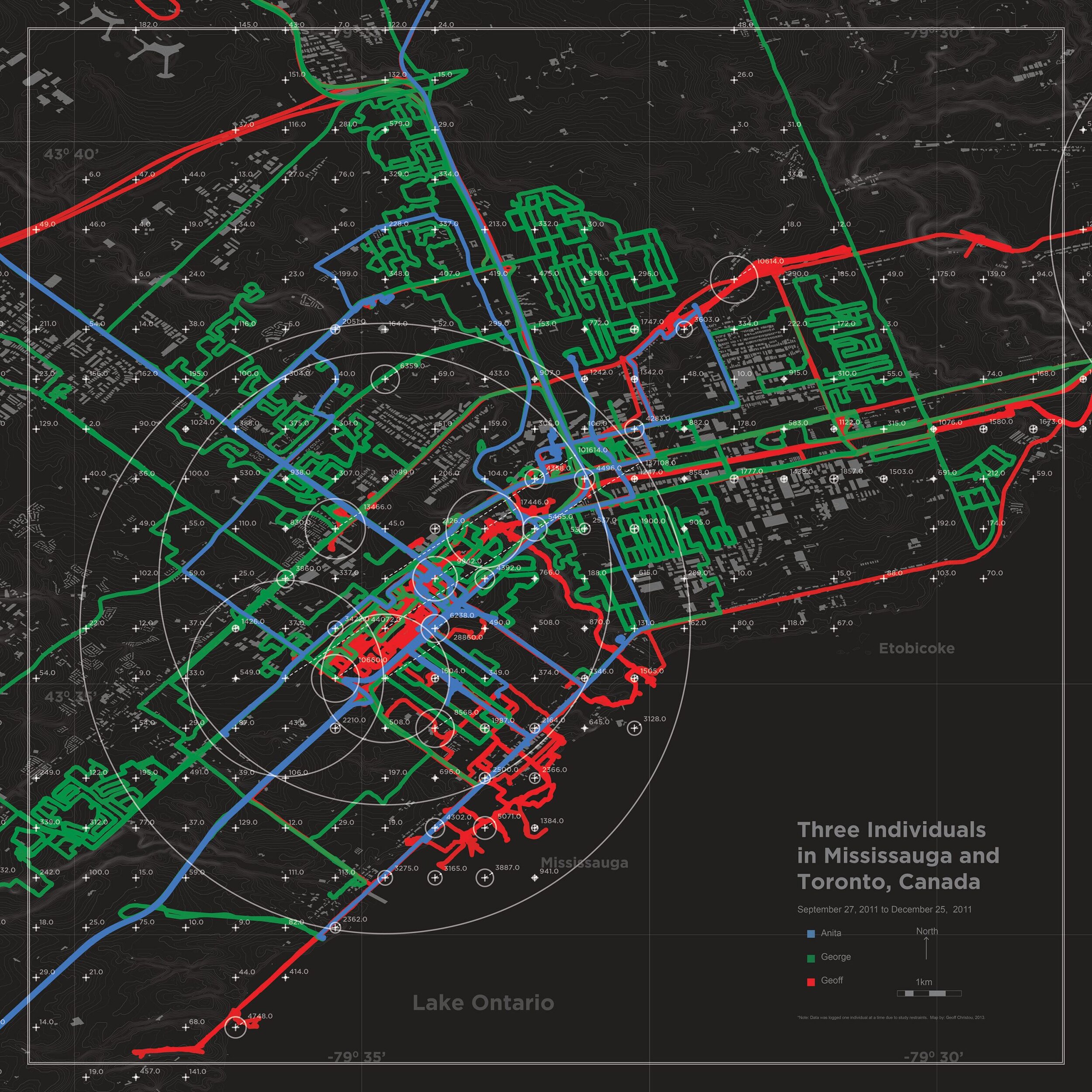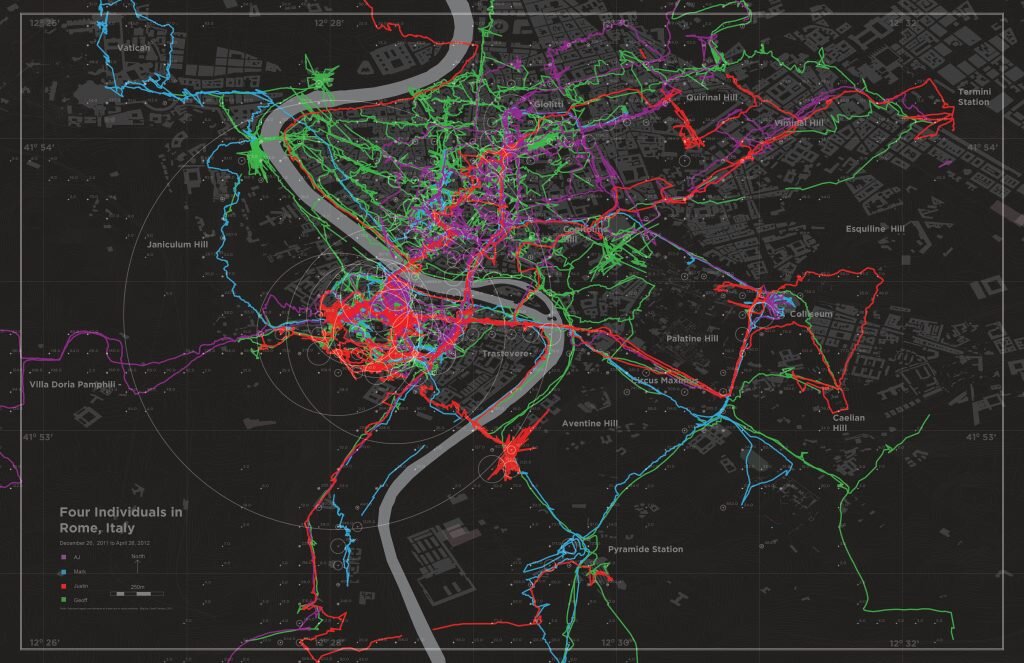Over the course of two years, in Rome,and Missississauga, I
worked with 8 volunteers to collect over millions of GPS data points.
Below is selection of the maps I created based on the data collected.

What emerges shows that our worldlines are informed by a combination of laws, property divisions, cultural practices, Infrastructure, as well as our own particular ideas and beliefs. The maps reveal that we are in a particular space at a particular time because of the decisions we make, as well as decisions we do not make and cannot control, such as the place, time, and culture into which we are born. In the worldlines of a family in Mississauga, a group of students in Rome, 367 students at the University of Waterloo, and in four Catholic liturgies, we see how, in various places and contexts, people appear in spacetime. Similarities emerge in the shape of the worldlines of individuals, along with differences that trace the history of their decisions, beliefs, and motivations.
The worldline of each individual embodies the algorithms for various ways of movement. These algorithms undergo a process of selection in which the fit are selected and the unfit are discarded. Through trial and learning, individuals adopt the algorithms which are best suited to their ends.
The result of the process of cultural evolution is a localization of certain practices in space and time. This is what is known as “homophily”. These social forms have a corporeal manifestation – as Herbert Spencer, aptly called them a “fabric” – in the form of worldlines, the variation of which is due to both internal and external forces.
We act out our ideas, beliefs, and ambitions within a physical world, and move in the material framework established by buildings, cities, roads.
The ideas and assumptions which have governed the deposition of matter (architecture, infrastructure) are unique to the culture, place, and time. The shared interpretation of a space by many people (as codified in the laws and traditions) over a long period of time, results in the delimiting of that space in a manner reflective of the differential success of these interpretations within a particular environment. When a community, city, or species has existed for a long period of time in the same environment with little external interference, then these algorithms can reach a state of equilibrium that may persist for millennia without variation in what is called an “evolutionary stable strategy”. When a ‘foreign’ set of algorithms enters a place which has equilibrium a process of selection will occur between the sets of algorithms. This will change both of the algorithms as well as the physical environment (architecture, infrastructure).
All data was collected with Ethics Approval from the University of Waterloo.
See more at Ariadne's Thread.
See more at:


